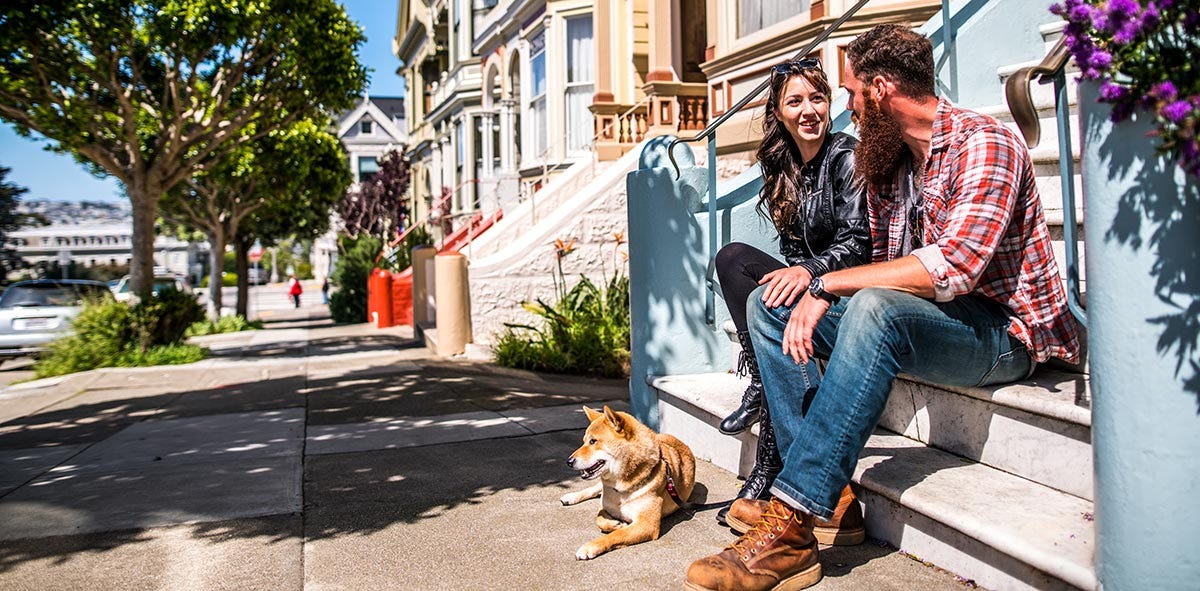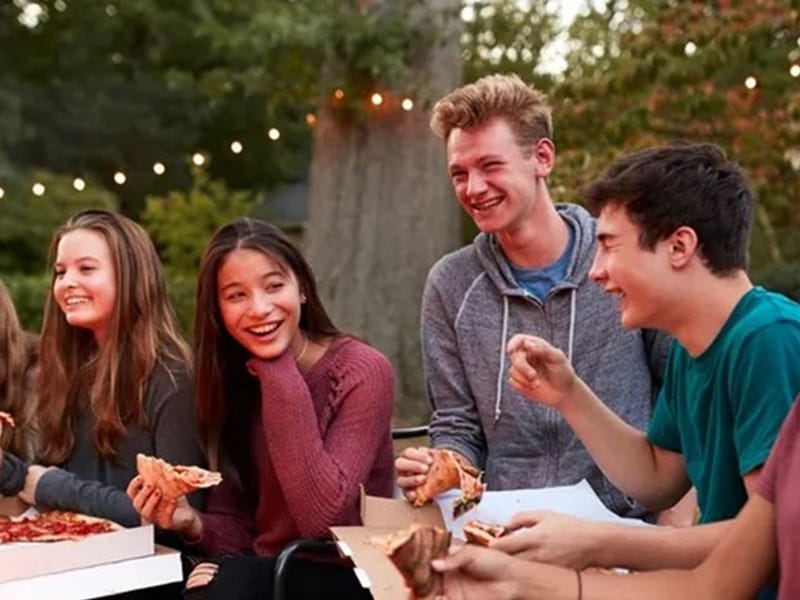Greetings and introductions in the US

Importance of handshakes
Let’s kick it off with the great American handshake, which can sometimes be very… energetic! In the US, handshakes are the gold standard for first impressions if you’re not ready to enter the hug zone just yet or if you’re in a professional environment. Speaking of which, check out our guide to American work culture and business etiquette!
A good handshake should be firm — your hand is alive! — but not bone-crushing. You’re aiming for confidence, not dominance. Ah, and also, don’t linger. Make eye contact, smile, and give a solid two to three pumps before letting go. And keep things simple — no fist bumps or secret handshakes unless you’re at a middle school reunion.
Casual greetings
Now, what about when you’re not in a formal setting? Casual greetings in the US are relaxed and often informal. A friendly “Hi” or “Hello” with a quick hug is standard, though depending on the region, you might hear “How’s it going?” (Translation: You don’t actually need to answer how it’s going).
While “Good morning/afternoon/evening” can be a bit more formal, they’re still totally acceptable pretty much anywhere, especially in service settings. Americans tend to appreciate the friendly, familiar vibe, so feel free to greet your barista with a cheerful “Hey!”
Ah, and to my fellow French readers: “la bise” is absolutely not common and even considered weird in the US, so stick to a handshake or a hug depending on the situation.
Smiling and eye contact in social settings
One of the main reasons why I love the US so much is people’s kindness. Obviously, I’ve met your typical grumpy cab driver in large cities, but overall, in America, smiling is as common as pumpkin spice in fall — no comment on that one.
People smile at each other on the street, in grocery stores, and even during awkward elevator rides. It’s a sign of friendliness and approachability. When you pair that with eye contact, you’ve got yourself a winning combination for social success, as honesty is highly valued. Not too much, though — it’s not a staring contest!
At social gatherings, a smile and some light eye contact go a long way in making connections. It signals that you’re engaged and open to conversation. Try to avoid looking away too often, as that can come across as disinterested.
Use of first names
As a French person — where your last name is used a lot — I really enjoy that Americans are on a first-name basis quickly, especially in casual settings.
You might meet someone, exchange a couple of jokes, and boom — you’re using their first name. Of course, in professional environments, it’s usually best to stick with Mr., Mrs., or Dr. unless told otherwise. When in doubt, let the other person set the tone and go with the flow!
What to avoid when it comes to greetings and introductions etiquette in America
The US is home to a melting pot of cultures and people are pretty open-minded, so don’t worry too much about etiquette faux pas. That being said, a couple of things should be avoided.
First off, don’t be overly formal. Overusing titles like Sir or Madam can make you seem cold and stiff. Avoid intense or very soft handshakes, and use physical contact sparingly. For example, it’s probably not a good idea to hug someone you’ve just met. Lastly, no need to bow or curtsy unless you’re in a historical reenactment society!
The basics of American politeness and conversation

Please and thank you
In practically any culture, these two little words are like magic. However, in the US, they take a whole other dimension. They’re a must in American politeness, and absolutely necessary to show respect.
If you’re asking for anything — a coffee, directions, a favor — throw in a “please.” When someone does something for you, whether big or small, don’t forget a cheerful “thank you!”, and don’t hesitate to add a touch of American enthusiasm with “a bunch”, “a lot”, “a million”!
You’ll find lots of ways to say “please” and “thank you” in English in this article.
Apologizing
As a French person, I’m always amazed at the use of “sorry” in the US. People use it literally every 5 minutes, even when they have nothing to apologize for and when it’s not their fault!
Interrupt someone involuntarily? “Sorry!” Bump into someone in a crowded space? “Sorry!” Didn’t hear what someone said? “Sorry, could you repeat that?” Minor inconveniences often call for quick apologies, but here is a guide to apologizing in English if you need something more elaborate — like this.
Small talk
Ah, small talk—the lifeblood of American social interaction. In fact, many Americans feel awkward when there’s silence in the conversation!
If you’re not used to small talk — you might be from a Nordic country? — it might feel odd at first, but don’t worry, it’s easier than it seems. Weather, sports, local events and restaurants, definitely restaurants — these are all great topics for casual conversation starters.
You don’t need to get too deep right away. Keep it breezy. If you’re at a party and someone brings up the latest NFL game or the crazy weather, congrats! You’re in the middle of classic American small talk. And to our Nordic readers, don’t be scared, people can be loud and it’s normal!
Here’s a full guide to small talk for you in case you need inspiration.
Controversial topics to avoid in casual conversations
While Americans are usually very open, it might be best to avoid a few topics. For example, politics, religion, or anything too personal are not appropriate when you’re just getting to know someone.
Save those conversations for when you’re in a more comfortable setting, with close friends or family. And know your audience!
What to avoid when it comes to conversation etiquette in America
Most Americans are super easy to talk to. However, avoid interrupting people while they’re speaking — apologize if you do — and let the other person talk as much as you do. Americans appreciate when conversations flow naturally, without one person dominating the dialogue.
Also, oversharing personal details too quickly can make things a little uncomfortable — you know, TMI! (too much information).












